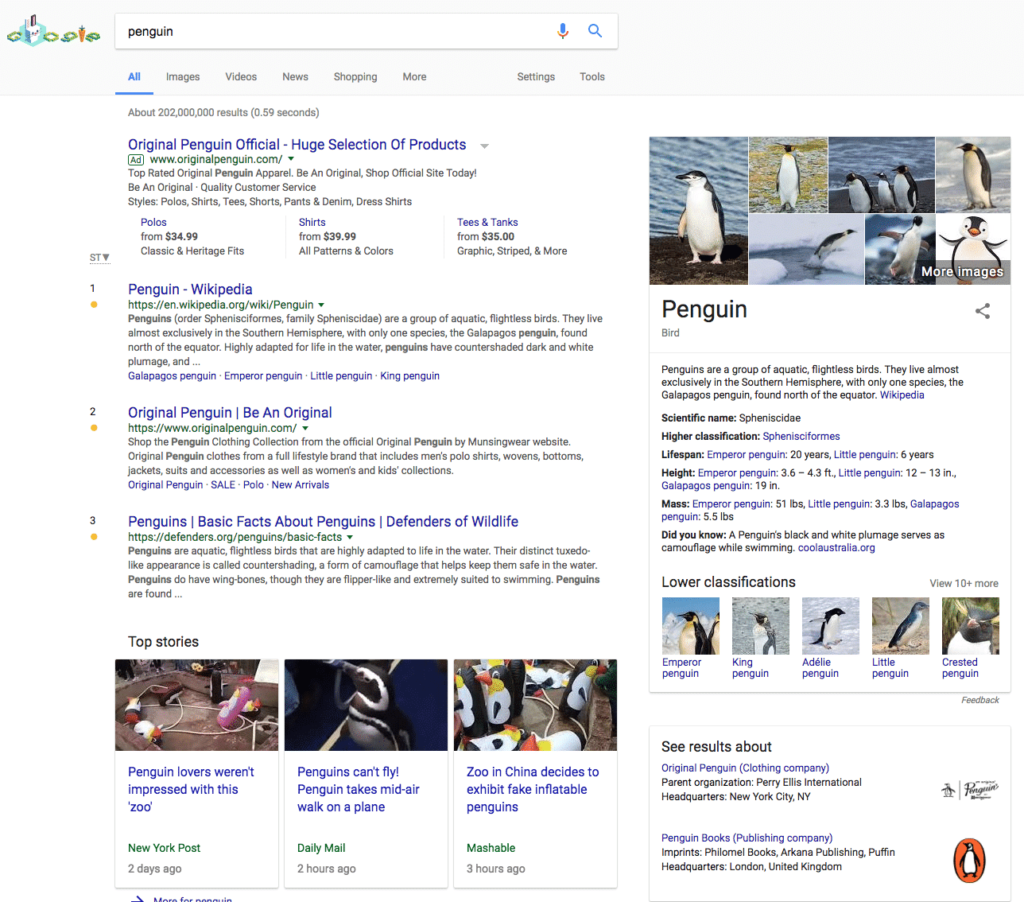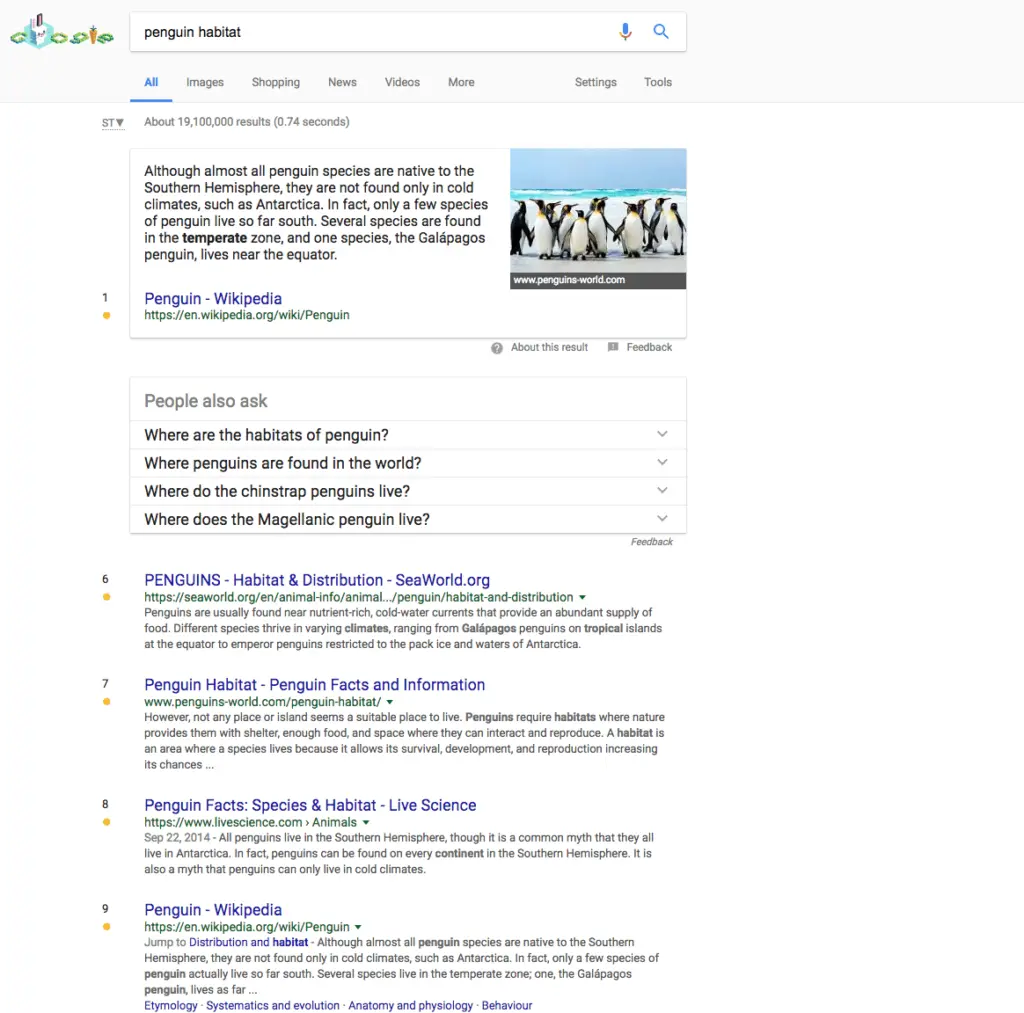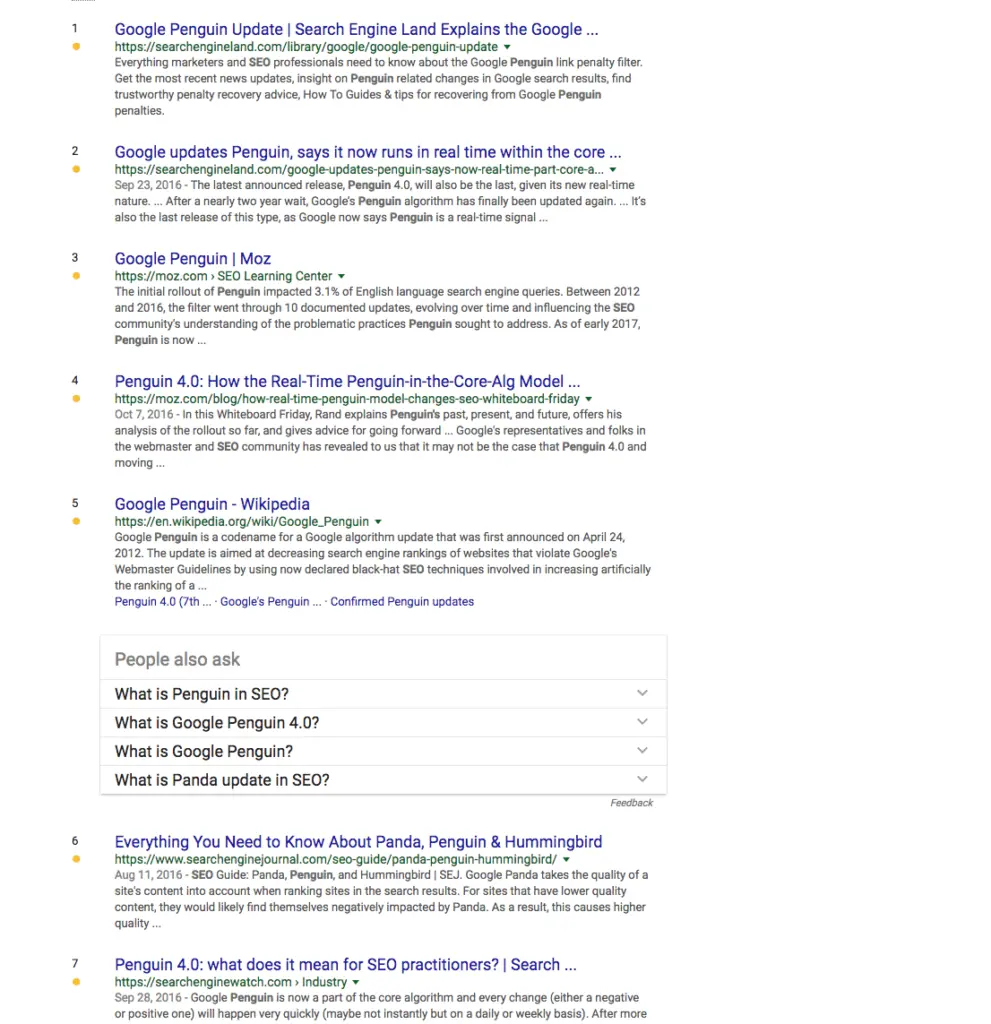Semantic search is a search method utilized by Google that analyzes user intent through context and content to generate and order search results. When a term or phrase is searched on the web, Google provides (and the user expects) a result that is relevant to the search phrase. The context of the searched words combined with the content and context of a website helps the search engine decide the result that best satisfies the query.
A visual explanation is a great way to understand semantic search. If you type in the word “penguin” in a Google search bar, Google assumes (based on criteria such as trending topics, past search, browser history, geographic location) the user wants to look up the animal, but also provides more options- there is a clothing line, a book publisher and a kids’ learning program.
Because Google does not have the context of the term “penguin,” the search engine result page (SERP) first returns the most common sought after answer- the animal, followed by two other options in the sidebar (the clothing company and the book company). By adding context, Google has a better idea of user intent. For example, adding the word “habitat” to “penguin” and Google knows that the search is about bird, and not a book or a shirt.
This example can be further illustrated by typing in “penguin SEO.” SEO is short for “search engine optimization,” and Google has an algorithm named penguin. As a result of semantic search, Google knows that if a search query has the words “penguin SEO” the user is not looking for the bird, book, or shirt.
If a search query is “penguin cotton,” Google understands that the user is is looking for Penguin cotton shirts, and that “cotton” does not go with either a bird or a book.
Why Semantic Search is Important
Google is not just a search engine; it is the primary source for many to look up information. That information ultimately comes from websites. For a website to perform at its optimum potential, it needs to be created so that Google can easily understand the information available and the overall topic.
A study conducted by Backlinko determined “that content rated as topically relevant” significantly outperformed content that didn’t cover a topic in-depth.” The more in-depth a website and its content, the higher the SERP rankings.
With the release of the Hummingbird Algorithm in 2013, Google was able to understand a search query and the user’s intent. By designing a website that is the content leader with authority and expertise in its topic, you drastically improve your chances for higher placement on the search engine result page.







